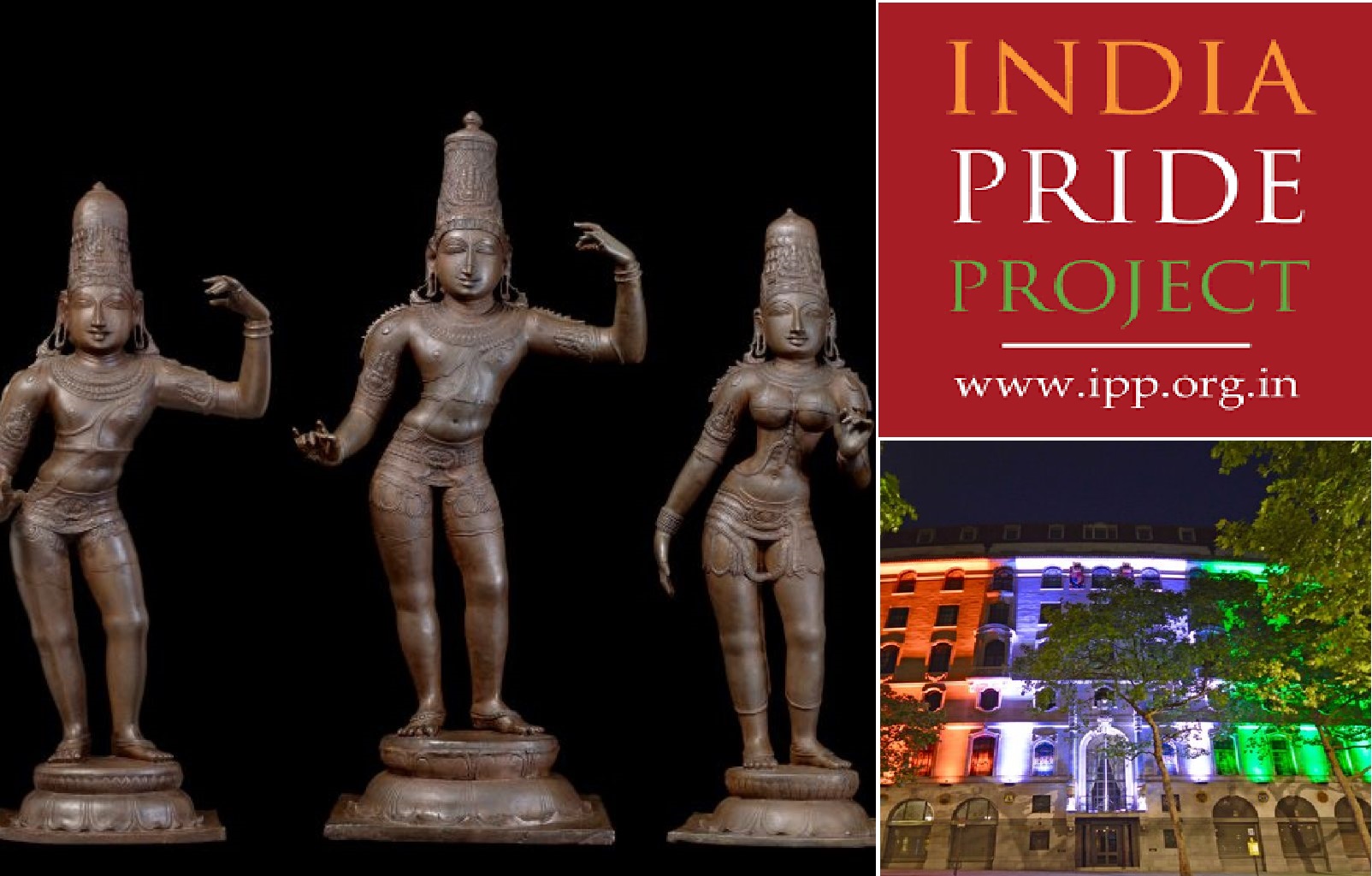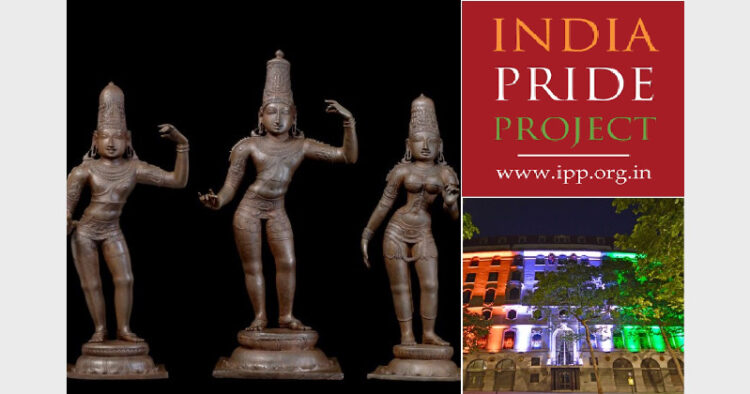The idols of Sri Rama, Lakshmana and Sita which were stolen from a temple in Nagapatinnam in 1978 were brought back by the concerted efforts of the India Pride Project, Tamil Nadu police officers in the idol theft wing and Indian diplomats in London.

Idols of Lord Ram, Sita and Lakhsman, stolen 40 years ago from Nagapattinam district in Tamil Nadu, are all set to reach its origin soon. These 15th century idols, believed to be that of Vijayanagara king era, have been handed over to India by the British government.
An antique Panchaloha Lord Nataraja idol in cosmic dance posture, stolen and smuggled to Australia nearly 40 years ago, has been brought back to India. This idol is considered to be belonging to the Pandia era, and has already Tamil Nadu soils from the Art Gallery of South Australia. It was stolen from a temple in Tirunelveli. This was possible due to the efforts of the High Court appointed investigation team led by retired IG of police Pon Manickavel. Another 1,045 years old idol smuggled by a cartel led by idol trafficker Subhash Kappoor ( who is in custody) valued at Rs 2 crores, has also been brought back to Tamil Nadu.
During the Dravidian rulers, rare and antique idols were stolen, smuggled to western countries by smuggling cartels with official patronage from greedy politicians. External Affairs Minister S Jaishankar, in his address at the Atlantic Council in Washington DC a year back, said during the 200 years old colonial rule saw officials working under the Crown looting indian jewels, armour, and sculptures , worth $45 trillion today.
India Pride Project, an initiative by a group of art enthusiasts, through social media tries to bring back stolen, smuggled idols from western countries. It gives a call to identify stolen religious artifacts from Indian temples and work towards their return. It complained to the Art and Antique unit of the London Metropolitan police. After three years of investigation, the idols were traced to an art collector’s possession. The 15 century era three idols have historic importance and are believed to have been stolen and smuggled to the UK 42 years ago. They were stolen from Rajagopalaswamy temple at Ananda Manglam in Nagapattinam district in 1978.
It is leant that British Antique Dealers Association web page gave lead and a tip from a volunteer in London which the India Pride Project pursued with London police. It is also learnt that the three idols might be flown to New Delhi and sent to Tamil Nadu or directly to Chennai. Officials said the idols would be installed at the same temple as of now. Police sources who confirmed filing of a theft case in 1978 that matched with the art dealers’s buying period which happened at the same period. Some of the accused in the case had been convicted but the idols could not be recovered.
Vijayakumar, in a function in Chennai recently on Citizen led initiative to stop the plunder of cultural treasures of India, narrated an incident. He said in the 18th century an art collector in Tranquebar port which was the Danish colony, bought the 30 ancient bronze idols from temple priests in exchange for a bag of rice and betel nuts. The idols were sent to Denmark Kingdom. These information are in museum records. There are many more exchanges. He said in earlier days to protect the idols from invaders, temple managers buried and hidden the rare idols. Only a few could have been retrieved.
Vijayakumar appealed to the government to reopen the idol cases that were closed between 1960 and 1980 due to lack of evidence. Doughlas Latchford’s home in London is full of ancient bronze including 11th century AD Rama and many idols of Vishnu, Ganesh and Nataraja. Many more like him are yet to be traced who illegally possess Bharat’s ancient pieces of art. He said it was a sad sight to see fractured idols at collectors’ hands in foreign countries. They could have been damaged while smuggling. To cite, a 9th century AD varaha statue of UP was separated from its base.
Near Madurai at Periya Ulagani village, a Vishnu idol, believed to be of 8th century AD during the desilting of village pond. Madurai Kamaraj University Tamil department has said the idol belonged to the Pandian era.
Devotees urged the government to prepare an index of statues, idols, artefacts available now along with properties and make a list of missing one from the records. The missing one should be recovered. They are the one which tells our past history and draftsmanship.














Comments